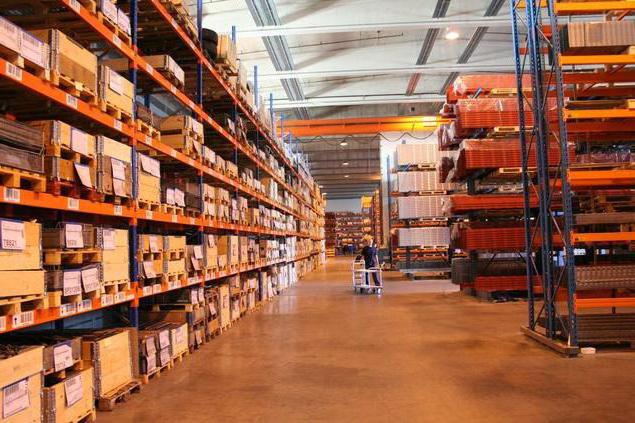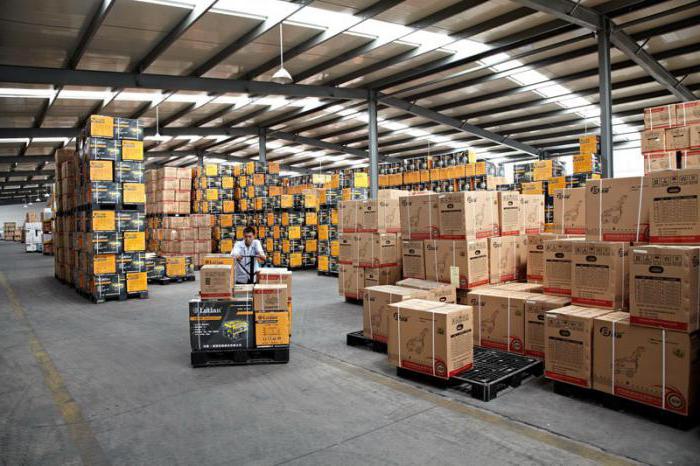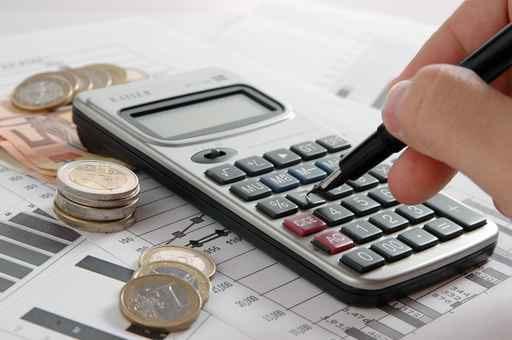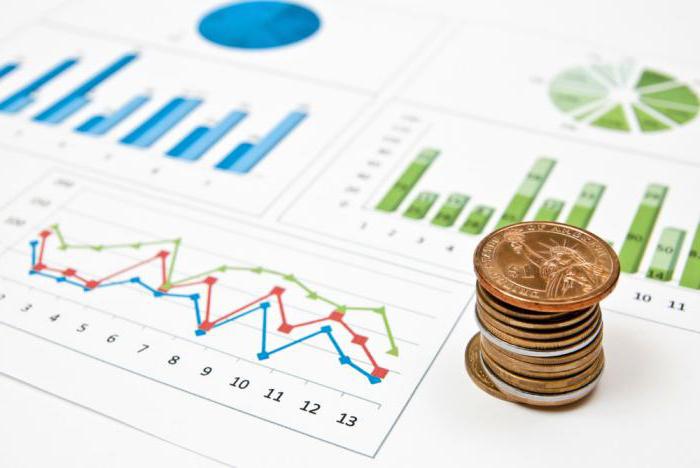Account 43 “Finished goods” was created to reflect data on the quantity and value of products manufactured for sale. MPZ go into the category of "finished" after delivery to the warehouse. The process is accompanied by the execution of relevant documents. We analyze the characteristics of the account 43 and the organization of accounting on it.
What is a “finished product”?
To carry out accounting operations, it is necessary to clearly understand what is hidden behind the term “finished products”. These are assets that are part of the MPZ, which are the final result of production and are intended for sale. At the same time, they are properly modified, fully equipped and meet all the requirements put forward by customers. It can be both individual products and semi-finished products. Some of the finished products are sometimes directed to the needs of the enterprise itself.

Do not confuse finished products with goods. These are also assets within the MPZ, but only those that were purchased for sale from other companies or individuals. persons, not produced independently. Goods are recorded separately.
Score 43: Characteristic
Data on prices of manufactured products are reflected in the 43rd account. The balance of account 43 “Finished goods” is formed only by debit. Its value is shown in the balance sheet as part of assets.
Upon receipt of the goods at the warehouse, account 43 “Finished goods” is debited. Upon sale or other transfer of the MPZ - is credited. Posting using an account is fairly simple. More often, the snag happens at what cost the MPZ is kept. According to PBU 43 ready-to-sell products can only be listed at actual cost, but on some sub-accounts it is allowed to evaluate products in other ways.
Organization of analytical accounting on account 43
Ready-to-sell products must be continuously monitored and monitored to prevent damage, loss and other negative consequences. It is recommended to create a separate subaccount for each product category. Due to the fact that these are material values, they can be reflected in a natural meter. This means that it is necessary to organize analytical accounting not only in monetary units, but also in kind. This will ensure accuracy, and also allow you to easily calculate the cost of one position.
In addition, inside the account. 43 subaccounts can be created:
- 43/1 - to account for products at planned cost;
- 43/2 - to account for products at actual cost.

Recommendations on the use of certain prices in accounting purposes, as well as accounts that can be applied are indicated in the accounting policies of the enterprise.
What amounts should not be included in account 43?
Not all products that have passed the stages of production are subject to accounting in the number of finished products. It is worth remembering a few exceptions, in the event of which the registration of the receipt on account 43 “Finished products” will be incorrect:
- the amount of services rendered and work performed to the party (the cost is written off immediately from account 20 to debit 90);
- products that are handed over to customers immediately “on the spot” and are not executed with an acceptance certificate (reflect in the number of work in progress);
- products purchased in order to complete their own products or further resale (recorded on account 41).
Carefulness when organizing the account on account 43 will help to avoid mistakes that may further distort the results of calculations of cost and total sales.
Correspondence with other accounts
In order to understand which accounts, and most importantly, why account 43 “Finished products” interacts, you need to know at least in general terms the process of releasing products from production and its further movements. The accounts of the production of products for the reporting period collect the amount of expenses for their manufacture. The enterprise is entitled to produce finished products at the standard cost or actual costs. In this case, one way or another, the amounts are debited from the production account and come to the warehouse. Then begins the process of selling or using products, which entails the deduction of amounts from the account.

In this way, account correspondence 43 "Finished goods" on the debit is carried out with the following accounts:
- production (main, auxiliary, serving);
- output (used for accounting at standard prices);
- 79;
- 80 (if the product was transferred as a contribution to the authorized capital);
- 91 (in terms of other income).
On the credit of the account, postings occur when a certain amount of finished products is written off from the warehouse. This happens for various reasons:
- low-quality production, use for production needs (20–25);
- use for sale of other goods (c. 44) or when goods are shipped to the buyer (c. 45);
- write off to the needs of the organization (c. 10);
- when transferring finished products from the branch to the head office or vice versa (inv. 79);
- transfer of finished products to the participant of the partnership who has left it (c. 80);
- in case of spoilage, shortage, write-off of prime cost and other incidents affecting the financial result, the amounts are reflected in the account. 90, 91, 94, 97.
For the correct preparation of postings, it is worth remembering: the debit of account 43 “Finished products” takes into account the arrival of products, and credit - expense.
Organization of finished products
After the product has passed the final stage of the production cycle, it is transferred to the customer immediately for sale or to a materially responsible person in the warehouse. At the same time, the procedure is accompanied by the execution of various documents, among which: the acceptance certificate of the MPZ, delivery and delivery notes, payment order requirements and others. The storekeeper takes MPZ to the warehouse on the basis of these securities, leaving one copy at home.
The main feature of the reflection of products ready for sale in accounting is its valuation in value terms. As a rule, when the products are out of production, it is impossible to establish for certain the cost of its manufacture. During the period, adjustments are made to the cost of production. The previously reflected amount is adjusted to the actual.

Accounting for finished products (account 43) can be made at the following prices:
- actual (production, abbreviated);
- normative;
- wholesale;
- free vacation;
- free market.
Each of the methods for evaluating finished products is convenient in its own way. Which one to use in a separate enterprise is up to management to decide accounting policies This item must be indicated.
Actual Price Accounting
There are two types of actual costs of the production process: full and reduced. The second option excludes from calculations general running costs. Accounting for finished products using account 43, it is quite simple: all the costs of manufacturing products accumulated on account 20 are written off in Dt 43. Synthetic accounting is carried out according to the value of actual costs, but on some sub-accounts records are made at accounting prices. At the end of the period, the actual cost of the goods capitalized on the warehouse is calculated, and then its deviation from the accounting prices is calculated. If the production cost more than expected, the amount of the difference is posted to Dt “Finished products” Kt “Main production”.If, on the contrary, the actual cost is lower, then use the red reversal method.

It is worth noting that when using this method, do not use other accounts, but open 43 sub-accounts to the account: “Products at discount prices” and “Deviation of actual prices from standard prices”. Amounts written off as sales. The deviation of unsold products in stock remains in the subaccount. Postings are made in the order described above. The arrival is carried out in the subaccount accounting for products at actual prices, and the deviation is reflected in a separate subaccount. Normative values are written off to the cost of sales.
The method is very convenient for small-scale production when releasing products every day. The main disadvantage of accounting for actual production costs is the inaccuracy in calculating the actual cost after delivery of the products to the warehouse. Only at the end of the month you can find out the true price of the product, in connection with which you have to make adjustments.
Accounting for finished products at planned cost
When accounting for the results of production at the standard cost on account 43, finished products are reflected at planned, pre-set prices. Their calculation is carried out before the start of the production process. In order to fix the actual cost and further determine the deviation of different prices from each other, use the 40th account. At the same time, postings to account 43 “Finished goods” are performed in the following order:
- When transferring products to the warehouse, records are kept at the standard cost, which is reflected in the credit of account 40: Dt “Finished products” Kt “Production output”.
- As the products are sold, their normative cost is written off to the financial result: Dt “Cost of sales” Kt “Finished products”.
- At the end of the month, the accountant calculates the actual cost of production capitalized on the warehouse products. The resulting value is attributed to Dt 40: Dt “Output” CT “Main production”.
- Comparing credit turnover (standard value) with debit (actual value), it is easy to determine the deviation of one price from another. Having defined it, the amount is written off when the actual cost is exceeded by posting Dt “Cost of sales” Kt “Production output”. If the standard cost exceeds the actual, then use the reversal method. The posting looks the same, but the amount is written with a negative sign.

Keeping records of products ready for sale at standard prices has several advantages. During the period, the assessment remains unchanged and predefined. This facilitates the planning and reporting processes, especially in the context of mass production.
Other methods for evaluating finished goods
In addition to the actual and pre-calculated (normative) prices, the company has the right to apply other types of value. For example:
- Wholesale - involves the calculation of the difference between actual prices and the cost of wholesale deliveries. The stability of wholesale prices allows you to reliably assess the volume of products and most accurately draw up production plans for the following periods.
- Free including VAT - applicable for accounting for products or work that are performed on an individual order. The amount of VAT is recorded separately.
- Free market - is used to evaluate products that are sold through retail.

All valuation methods, with the exception of applying the actual cost, require the calculation of deviations of the estimated amounts from production.
Shipment of goods
After the conclusion of the supply contract, the products are shipped to the buyer. Active account 43 “Finished goods” is credited to the amount of transferred products. At the same time, depending on the content of the contract, the products are reflected on the account 90.1 or 45.If it is impossible to recognize revenue immediately after delivery, and ownership of the product has not yet passed to the buyer, then the entire period of delivery in the seller's accounting records the amount of goods shipped remains on account 45. Most often this happens with export or full payment agreements.
The amount of goods shipped is reflected in the accounting records by posting: Dt “Shipped goods” Kt “Finished goods”. After receiving the full payment, revenue from sales is recognized: Dt “Cost of sales” Kt “Shipped goods”.
The use of active account 43 is one of the inevitable stages of organizing accounting in production. Thanks to it, you can track information about the quantity and cost of products in stock for sale, analyze the costs of its production and sales turnover.








